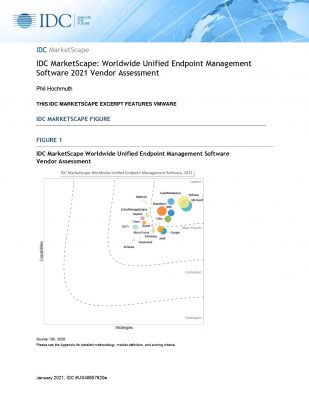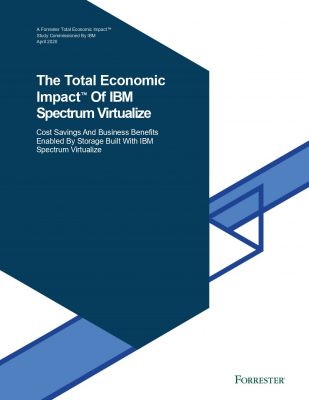Highlights:
- Network virtualization creates a dynamic and flexible business network that can swiftly adapt to changing needs. This technology allows businesses to customize network capacity, ensuring it aligns with their evolving requirements, maximizing efficiency and productivity.
- Network virtualization revolutionizes data center networks and cloud management, automating processes for improved speed, agility, and security.
In today’s interconnected world, where data flows incessantly, the need for efficient and scalable networks has never been more crucial. Network virtualization emerges as a groundbreaking solution, revolutionizing how we design, deploy, and manage networks. By abstracting network resources from their physical infrastructure, virtualization empowers organizations to create multiple independent virtual networks, providing agility, flexibility, and cost savings.
Network virtualization creates a dynamic and flexible business network that can swiftly adapt to changing needs. This technology allows businesses to customize network capacity, ensuring it aligns with their evolving requirements, maximizing efficiency and productivity.
Let’s embark on the journey and explore the multifaceted landscape of network virtualization, uncovering its benefits, applications, challenges, and transformative potential for the modern data-driven era.
What is Network Virtualization?
Let’s define network virtualization in simple words; it is a technology in network management that allows the creation of a logical layer of abstraction. It treats a group of physical components as a unified network, combining available resources to consolidate multiple networks, segment networks, or establish networks between virtual machines (VMs).
Administrators can move VMs across domains without network reconfiguration with network virtualization software. This software creates a network overlay, enabling separate virtual network layers to operate on the same physical network.
Now that we’ve explored network virtualization, let’s delve into its important role in revolutionizing modern data management.
Important Role Played by Network Virtualization
Network virtualization plays a critical role in modern data centers by providing businesses with a range of benefits, that includes:
Scalability: Network virtualization empowers businesses to scale their network infrastructure in response to rapidly expanding requirements. Virtual networks can be easily created, modified, and removed without disrupting the underlying physical network infrastructure.
Agility: Virtual networks are highly agile, enabling businesses to quickly create and modify them to adapt to changing requirements and business needs.
Security: Network virtualization enhances security by isolating traffic between virtual networks, preventing unauthorized access, and improving overall network security.
Enhanced application performance: Virtual networks can be customized to optimize application performance, reducing latency and improving overall application efficiency.
Now that we understand network virtualization’s important role, let’s explore the challenges organizations may encounter in implementing and managing this innovative technology.
Challenges of Network Virtualization
Network virtualization solutions have become highly popular in a brief span of time. In the dynamic landscape of IT infrastructure, network managers are proactively embracing cutting-edge technologies such as hardware, software, or hybrid virtualization topologies to gain unparalleled transparency and control over their business-critical applications.
However, organizations must be well-informed about the associated challenges in pursuit of network virtualization software. By understanding these challenges, businesses can make informed decisions and navigate the path to successful implementation, ensuring optimized performance and enhanced productivity in their B2B operations.
- The complexity of implementation and management: Implementing network virtualization involves intricate configurations and interactions between virtual and physical networks, requiring specialized skills and expertise. Managing these virtualized networks can be complex and challenging.
- Integration with existing infrastructure: Integrating network virtualization with existing IT infrastructure and legacy systems can pose compatibility and interoperability challenges. Ensuring seamless integration is crucial for a smooth transition.
- Security and privacy concerns: Virtual networks need to be safeguarded from unauthorized access and potential vulnerabilities. Ensuring the security and privacy of virtualized networks is a critical consideration.
- Scalability and performance optimization: Virtualized networks are dynamic, requiring efficient resource allocation and management to ensure scalability and optimize performance. Balancing resource allocation and managing network traffic is essential.
- Ongoing maintenance and updates: Network virtualization requires constant maintenance and updates to keep up with evolving technologies and ensure optimal performance. These are necessary to address any potential issues or vulnerabilities that may arise.
- Staff training and skill development: Adopting network virtualization may require training and skill development for the IT team to effectively manage and troubleshoot virtualized networks. Upskilling staff is crucial to maximizing the benefits of network virtualization.
By addressing these challenges, organizations can overcome hurdles and leverage the benefits offered by network virtualization in the modern data landscape. Indeed, there are numerous challenges, but network virtualization also brings in a few key perks. Let’s quickly dig into the benefits of network virtualization.
Benefits of Network Virtualization
Network virtualization revolutionizes data center networks and cloud management, automating processes for improved speed, agility, and security. It empowers organizations to enhance operational efficiency, respond faster, and strengthen data protection, driving competitiveness in today’s dynamic business landscape.
- Enhanced flexibility and agility: Network virtualization enables the creation of virtual networks that can be easily provisioned, modified, and scaled based on changing business needs. It offers the flexibility to deploy and manage networks more efficiently, adapting to dynamic workloads and requirements.
- Improved resource utilization: With network virtualization, organizations can maximize the utilization of network resources by sharing and allocating them among multiple virtual networks. This leads to optimized resource utilization and reduced costs.
- Simplified network management: Virtualized networks can be centrally managed through software-defined networking (SDN) controllers, providing a single control point. This simplifies network management tasks, such as configuration, monitoring, and troubleshooting, leading to operational efficiency.
- Increased security and isolation: Network virtualization enhances security by providing network isolation between different virtual networks. It helps prevent unauthorized access and contains security breaches within specific network segments, improving overall network security.
- Faster deployment and time-to-market: Virtual networks can be quickly provisioned, enabling faster deployment of applications and services. This reduces time-to-market for new initiatives and enhances business agility.
- Reduced costs: Network virtualization reduces the need for physical infrastructure, such as switches and routers, leading to cost savings in hardware procurement, maintenance, and power consumption. It also allows for better resource allocation, avoiding overprovisioning and reducing overall network costs.
By harnessing these benefits, organizations can optimize their network infrastructure, improve operational efficiency, and gain a competitive edge in the modern data landscape.
How Network Virtualization Works
Network virtualization operates by decoupling network resources and services from the underlying physical infrastructure, creating multiple virtual networks on a shared physical network.
A hypervisor or virtual switch runs on the physical network devices at the core of network virtualization. It creates and manages virtual network interfaces (VIFs) or virtual ports. Network virtualization software abstracts the physical network infrastructure, establishing logical virtual networks with unique resources such as IP addresses, subnets, VLANs, and routing tables.
Network overlays connect these virtual networks, encapsulating network packets with additional headers to traverse the physical network while maintaining isolation between virtual networks.
A central management system, often leveraging software-defined networking (SDN) controllers, helps manage and orchestrate the virtual networks, providing a unified view of configurations and policies.
By virtualizing the network infrastructure, organizations can achieve greater flexibility, scalability, and efficiency in network management, supporting the agile and cost-effective deployment of applications and services.
Winding Up
Network virtualization has revolutionized the way modern data centers operate. By abstracting and virtualizing network resources, businesses can achieve unprecedented flexibility, scalability, and security in their infrastructure. With the ability to create, modify, and remove virtual networks on-demand, organizations can adapt to changing business needs and optimize their network operations.
As technology advances, the network virtualization world holds even more potential for innovation and transformation. By exploring and embracing the power of network virtualization, businesses can unlock new opportunities and stay ahead in the dynamic digital landscape.























































